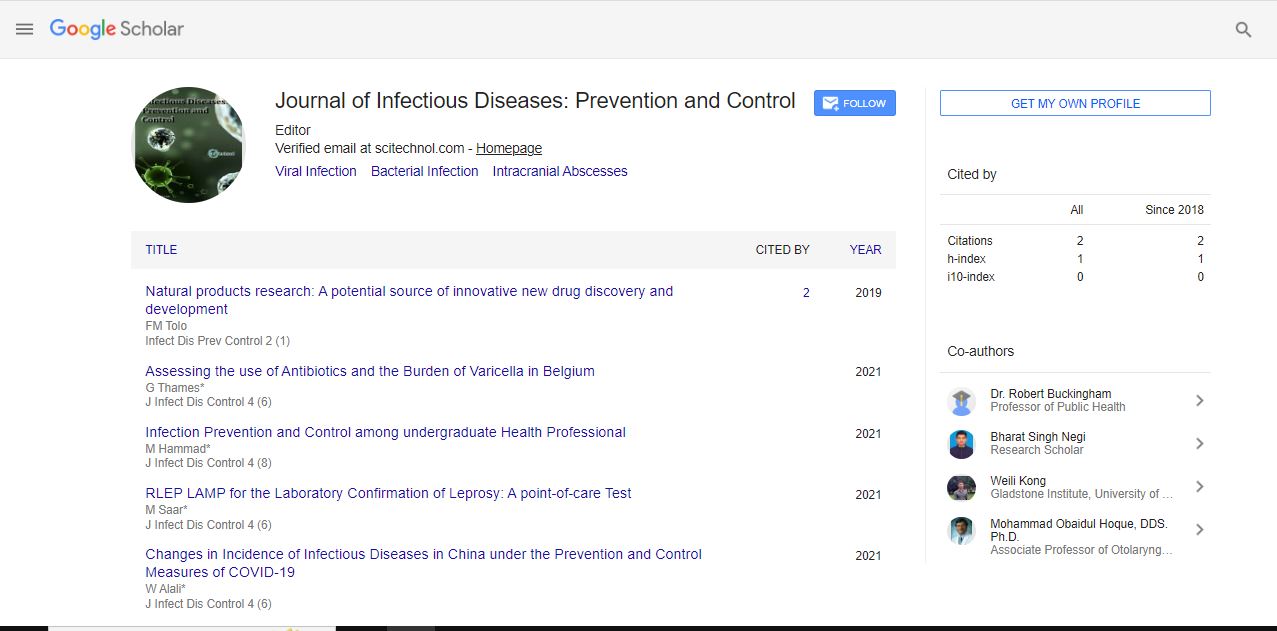Perspective, Infect Dis Prev Control Vol: 6 Issue: 4
Advancing Immune Medicine through Immunotherapy
Abbott Tankersley*
1Department of Medicine, University of Pennsylvania, Pennsylvania, United States of America
*Corresponding Author: Abbott Tankersley,
Department of Medicine,
University of Pennsylvania, Pennsylvania, United States of America
E-mail: abbotanker@uphs.upenn.edu
Received date: 24 November, 2023, Manuscript No. IDPC-24-127267;
Editor assigned date: 27 November, 2023, Pre QC No. IDPC-24-127267 (PQ);
Reviewed date: 11 December, 2023, QC No. IDPC-24-127267;
Revised date: 18 December, 2023, Manuscript No. IDPC-24-127267 (R);
Published date: 26 December, 2023, DOI: 10.36648/idpc.6.4.155
Citation: Tankersley A (2023) Advancing Immune Medicine through Immunotherapy. Infect Dis Prev Control 6:4.
Description
Considering advancements in medicine, immunotherapy remains as a ray of optimism, representing a revolutionary approach to advancing immune medicine. Immunotherapy, also known as immune-based therapy, is an innovative medical strategy that utilises the power of the immune system to combat diseases. Unlike traditional treatments that confront the disease, immunotherapy stimulates the body's natural immune defenses, empowering it to recognize and eliminate abnormal cells, such as cancer cells or those causing autoimmune disorders. The fundamental notion that immunotherapy is to enhance, modulate or redirect the immune system's responses. In the discipline of oncology, cancer immunotherapy has emerged as a revolutionary frontier, challenging conventional treatment modalities.
Visualising the way cancer develops immunotherapy demonstrates a structure of change, as it aims not just to treat the symptoms but to activate the body's natural defenses against cancer cells. Checkpoint inhibitors, a key component of cancer immunotherapy, block inhibitory indicates that cancer cells use to evade detection by the immune system. Visualizing the interaction between immune cells and cancer cells under the influence of checkpoint inhibitors provides information about how such therapies affect the immune response, allowing it to recognize and eliminate malignant cells. Adoptive cell transfer, another approach, involves engineering a patient's natural immune cells to express receptors that enhance the cancer-fighting capabilities.
The use of monoclonal antibodies exemplifies the precision of immunotherapy. These antibodies, designed to identify specific molecules on the surface of cells, serve as guided missiles in the immune system's arsenal. Visualizing the binding of monoclonal antibodies to cancer cells or inflammatory markers provides a glance into its deliberate and concentrated conduct. Monoclonal antibodies may be employed to block certain receptors on cancer cells, inhibit the growth of blood vessels that feed tumors or modulate immune responses to reduce inflammation in autoimmune diseases. The ability to visualize these interactions enhances the knowledge of the process monoclonal antibodies precisely intervene in disease processes. Immunotherapy has redefined the concept of vaccines, extending beyond infectious diseases to prevent and manage various conditions.
In the context of cancer prevention, therapeutic vaccines aim to train the immune system to recognize and eliminate precancerous or cancerous cells. Visualizing the administration of cancer vaccines provides inputs pertaining to its ability to stimulate the immune system to develop an exclusive defence, potentially reducing the risk of disease recurrence. Immunotherapy has also emerged as a viable approach of solving autoimmune disorders, where the immune system deliberately assaults healthy cells. Visualizing the immunomodulatory effects of therapies intended to establish equilibrium restoration to immune responses provides a nuanced understanding of how such medical interventions diminish autoimmune reactions. In autoimmune diseases like rheumatoid arthritis or lupus, immunotherapy aims to dampen excessive immune activity. Visual representations of immune modulation shed light when the manner in which such therapies relieve symptoms and improve the quality of life for individuals with autoimmune conditions. Visualizing the condition of immunotherapy also involves acknowledging challenges and ethical considerations. While immunotherapy has enormous potential, it is not a one-size-fitsall solution.
Conclusion
Visualizing the trajectory of immunotherapy analysis and development highlights the quest for greater efficacy, improved safety profiles and expanded applications across diverse medical conditions. Combining immunotherapies, developing personalized treatment approaches and integrating advanced technologies like artificial intelligence into treatment planning represent the evolving landscape. Visualization aids in depicting this multidimensional path, providing assistance for analysts, clinicians and patients alike. Advancing immune medicine through immunotherapy is an exploration of the dynamic connection between the body's immune defenses and the challenges posed by diseases enhancing the comprehension of its applications in cancer, autoimmune disorders and preventive medicine.
 Spanish
Spanish  Chinese
Chinese  Russian
Russian  German
German  French
French  Japanese
Japanese  Portuguese
Portuguese  Hindi
Hindi 